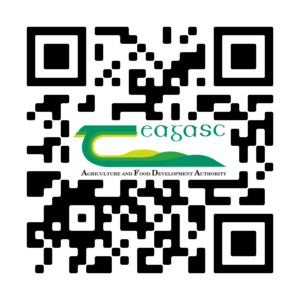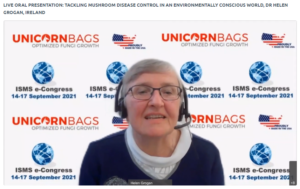
CHERRY LAUREL – PRUNUS LAUROCERASUS – PEST & DISEASE GROWER GUIDE
 A grower guide outlining the main pest and disease issues on Prunus laurocerasus is now available from Teagasc Horticultural Development Department at Teagasc Ashtown, or can be downloaded at Teagasc publications webpage. It was put together by Brian McGuinness, Andy Whelton and Helen Grogan in the Teagasc Horticultural Development Department, in conjunction with researchers at UCD. The group have been working together on a DAFM funded research project ‘New Leaves’, the aim of which is to address some of the technical challenges facing the relatively new cut foliage industry, in terms of propagation of key species such as Eucalyptus and other shrubby types such as Pittosporum and Viburnum. A key task of the work focused on the main pest and disease issues of Cherry laurel, which makes up 30% of the current 220 ha of production. Intensive studies were conducted on the very damaging bacterial disease, Pseudomonas syringe, commonly known as shot hole, and the life cycle of key pests such as Tortrix and Thrips, amongst others. The goal was to provide crop and pest management guidelines so that quality foliage can be delivered to the marketplace. Whilst the focus was on laurel for cut foliage, the results have relevance for anyone involved in container and hedge production of the species. ✽ A grower guide outlining the main pest and disease issues on Prunus laurocerasus is now available from Teagasc Horticultural Development Department at Teagasc Ashtown, or can be downloaded at Teagasc publications webpage. It was put together by Brian McGuinness, Andy Whelton and Helen Grogan in the Teagasc Horticultural Development Department, in conjunction with researchers at UCD. The group have been working together on a DAFM funded research project ‘New Leaves’, the aim of which is to address some of the technical challenges facing the relatively new cut foliage industry, in terms of propagation of key species such as Eucalyptus and other shrubby types such as Pittosporum and Viburnum. A key task of the work focused on the main pest and disease issues of Cherry laurel, which makes up 30% of the current 220 ha of production. Intensive studies were conducted on the very damaging bacterial disease, Pseudomonas syringe, commonly known as shot hole, and the life cycle of key pests such as Tortrix and Thrips, amongst others. The goal was to provide crop and pest management guidelines so that quality foliage can be delivered to the marketplace. Whilst the focus was on laurel for cut foliage, the results have relevance for anyone involved in container and hedge production of the species. ✽
|
ARTIFICIAL INTELLIGENCE TO IMPROVE CARROT FLY DETECTION
Carrot Fly (Chamaepsila rosae) is a pest of crops in the Apiacae family, such as carrots, parsnips, celery and several herbs. Three generations of Carrot Fly occur during the year between late April and November. Adults lay eggs in the soil and the larvae feed on plants by tunnelling into the roots and can cause significant economic damage, particularly to root crops if not managed.
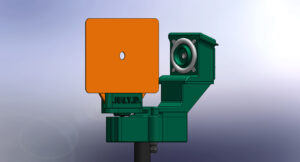 Integrated Pest Management methods such as rotation, sticky trap monitoring, adjusting sowing dates and the use of insect netting are implemented by growers to assist the management of pest populations in their fields. Teagasc are working with growers to predict the timing of generations of the pest using monitoring data and a weather based system MORPH. The predicted commencement of egg laying acts as a decision support to growers and assists them to accurately time and reduce pesticide use.An exciting, ongoing project between Teagasc researchers and the Tyndall Institute aims to develop camera and artificial intelligence technology that can identify carrot fly on sticky traps in the field and send an image of a ‘predicted Carrot Fly’ to the grower for confirmation. This would significantly increase the efficiency and accuracy of monitoring and prediction of carrot fly generations, both improving IPM and making it more usable for growers. If successful in developing this technology, its potential for use on other pests and crops is vast. ✽
Integrated Pest Management methods such as rotation, sticky trap monitoring, adjusting sowing dates and the use of insect netting are implemented by growers to assist the management of pest populations in their fields. Teagasc are working with growers to predict the timing of generations of the pest using monitoring data and a weather based system MORPH. The predicted commencement of egg laying acts as a decision support to growers and assists them to accurately time and reduce pesticide use.An exciting, ongoing project between Teagasc researchers and the Tyndall Institute aims to develop camera and artificial intelligence technology that can identify carrot fly on sticky traps in the field and send an image of a ‘predicted Carrot Fly’ to the grower for confirmation. This would significantly increase the efficiency and accuracy of monitoring and prediction of carrot fly generations, both improving IPM and making it more usable for growers. If successful in developing this technology, its potential for use on other pests and crops is vast. ✽
BEST4SOILS – WORKING TOGETHER FOR BETTER HORTICULTURAL SOILS

Best4Soil is an EU funded project to promote the exchange of knowledge around soil health. It is particularly focused on bringing together growers interested in various approaches to manage soil borne diseases and plant pathogenic nematodes. Methods investigated include the application of composts or organic matter and the use of cover crops or green manures.
To support this, the Best4Soil project has developed factsheets and videos to help introduce these concepts that are available at best4soil.eu. In addition to this, the project has developed databases, or decision support tools, which help growers to plan rotations that minimise the impact and carryover of soil borne diseases and plant pathogenic nematodes. These databases can be accessed at best4soil.eu/databases. Recently, the databases have been updated to include ‘wikis’ on selected disease and nematode species. These wikis give information on the pest lifecycle, damage symptoms and some suggestions on control approaches. Additional wikis are being added continuously to the databases.
A key focus of the project is to develop communities of practice, which are grower-led informal groupings, focused on exchanging knowledge around the core interests of the project, such as organic matter addition, use of cover crops and crop rotation. If you have an interest in forming or participating in such a community of practice, please contact Michael.Gaffney@teagasc.ie. ✽ |
SUPPORTING A SUSTAINABLE TRANSITION AWAY FROM PEAT-USE IN MUSHROOM CASING (S-TRANSIT)

A new four-year collaboration between Teagasc (Drs. Lael Walsh, Helen Grogan and Donal Gernon), University College Dublin (Dr. Saoirse Tracy and Prof. Olaf Schmidt), supported by industry expert Dr. Ralph Noble (Microbiotech Ltd) will see Walsh Scholar, Gabrielle Young investigate the development of mushroom casing mixes with the most promising alternative materials and conduct growth trials to evaluate their performance. This will help the mushroom industry transition away from peat, with a view of identifying and testing sustainable and suitable alternative casing materials for Agaricus bisporus production.
The mushroom sector is under immediate pressure to reduce peat use. The aim of the project is to help the mushroom industry transition away from peat. This new project will characterise the physical properties and structure of alternative materials using X-ray CT. In particular it will focus on understanding mycelial growth responses to the physical casing structure over time, assess moisture-holding properties, and determine the environmental impact of suitable casing materials using life cycle assessment. project is to help the mushroom industry transition away from peat. This new project will characterise the physical properties and structure of alternative materials using X-ray CT. In particular it will focus on understanding mycelial growth responses to the physical casing structure over time, assess moisture-holding properties, and determine the environmental impact of suitable casing materials using life cycle assessment.
The project commences in October 2021, and the participation of mushroom growers and mushroom casing producers in an industry stakeholder group are very welcome. For more information contact lael.walsh@ teagasc.ie or helen.grogan@teagasc.ie ✽
|
 TEAGASC HORTICULTURE DEVELOPMENT DEPARTMENT ARE EXPANDING: OPPORTUNITUES FOR TWO RESEARCH OFFICERS TEAGASC HORTICULTURE DEVELOPMENT DEPARTMENT ARE EXPANDING: OPPORTUNITUES FOR TWO RESEARCH OFFICERS
The working environment for the horticulture industry in Ireland has changed significantly in recent years. Teagasc Horticulture Development Department are expanding to meet these challenges and take advantage of potential development opportunities.
APPLE SECTOR RESEARCH OFFICER
Recruitment is underway for a permanent research officer to lead research projects that support the development of the apple growing sector in Ireland. The work will initially focus on finding apple varieties with suitable market and agronomic characteristics and developing production protocols to meet yield, quality and consistency requirements. The post-holder may also be required to support other fruit development work in line with the business plan of the department. The successful candidate will be expected to carry out and publish research in both scientific literature and popular press, in addition to being actively involved in dissemination to industry. As well as core funded work, the post holder will be expected to secure external funding from national and international funding bodies for post-graduate students, post-doctoral researchers and contract staff, to build their team.
GROWING MEDIA RESEARCH OFFICER
We seek a researcher to join our research team to focus on developing agronomically and environmentally sound alternatives to peat growth / casing materials, which meet the requirements of the professional horticulture sector. The use of peat in horticultural growing media and mushroom casing has garnered much attention in recent times, particularly the challenge of finding alternatives. The biggest challenge in reducing peat usage will be in the professional horticultural sector, where the existing economic model does not allow for any reduction in yield or quality. The replacement of casing material in mushroom production will be a particular focus, as despite considerable research, no viable alternatives have been identified to date. The successful candidate will join a team of permanent and contract staff carrying out horticulture research where they will be required to collaborate internally with other relevant departments in Teagasc and externally with researchers and stakeholders.
Detailed job specifications can be found at teagasc.ie/about/opportunities/current-vacancies/ ✽ |
ON-LINE MUSHROOM E-CONGRESS A SUCCESS

Dr. Helen Grogan of Teagasc’s Horticultural Development Department gave a presentation on ‘Tackling mushroom disease control in an environmentally conscious world’ to the International Society of Mushroom Scientists (ISMS) in September. The ISMS hold an international congress every four years, with presentations on the latest advances in science, technology and industry.
This year the congress went ‘online’ as the planned event in Vancouver had to be cancelled due to COVID. The ISMS e-Congress 2021 was a new venture and a new way of doing things. Although the social aspect of the event was sorely missed, the e-Congress went incredibly well. It was confined to a window of three hours each day, for four days, to enable as many people as possible worldwide to listen in to the live sessions. There was also a host of video recordings and posters on various topics to be viewed in your own time. This worked exceptionally well and great credit is due to the ISMS team behind the event. The proceedings are free to members of ISMS, which is free to join at www.isms.biz. ✽ |
 Integrated Pest Management methods such as rotation, sticky trap monitoring, adjusting sowing dates and the use of insect netting are implemented by growers to assist the management of pest populations in their fields. Teagasc are working with growers to predict the timing of generations of the pest using monitoring data and a weather based system MORPH. The predicted commencement of egg laying acts as a decision support to growers and assists them to accurately time and reduce pesticide use.An exciting, ongoing project between Teagasc researchers and the Tyndall Institute aims to develop camera and artificial intelligence technology that can identify carrot fly on sticky traps in the field and send an image of a ‘predicted Carrot Fly’ to the grower for confirmation. This would significantly increase the efficiency and accuracy of monitoring and prediction of carrot fly generations, both improving IPM and making it more usable for growers. If successful in developing this technology, its potential for use on other pests and crops is vast. ✽
Integrated Pest Management methods such as rotation, sticky trap monitoring, adjusting sowing dates and the use of insect netting are implemented by growers to assist the management of pest populations in their fields. Teagasc are working with growers to predict the timing of generations of the pest using monitoring data and a weather based system MORPH. The predicted commencement of egg laying acts as a decision support to growers and assists them to accurately time and reduce pesticide use.An exciting, ongoing project between Teagasc researchers and the Tyndall Institute aims to develop camera and artificial intelligence technology that can identify carrot fly on sticky traps in the field and send an image of a ‘predicted Carrot Fly’ to the grower for confirmation. This would significantly increase the efficiency and accuracy of monitoring and prediction of carrot fly generations, both improving IPM and making it more usable for growers. If successful in developing this technology, its potential for use on other pests and crops is vast. ✽

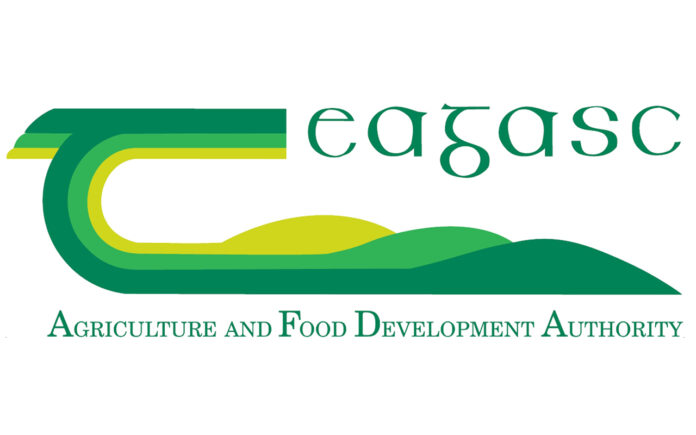
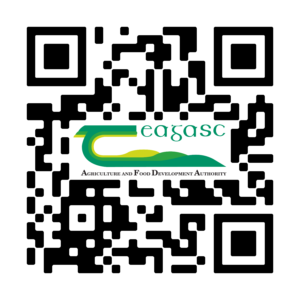
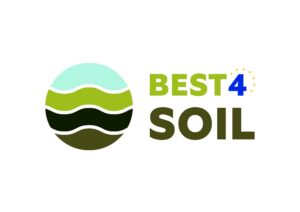

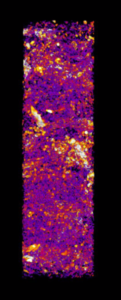 project is to help the mushroom industry transition away from peat. This new project will characterise the physical properties and structure of alternative materials using X-ray CT. In particular it will focus on understanding mycelial growth responses to the physical casing structure over time, assess moisture-holding properties, and determine the environmental impact of suitable casing materials using life cycle assessment.
project is to help the mushroom industry transition away from peat. This new project will characterise the physical properties and structure of alternative materials using X-ray CT. In particular it will focus on understanding mycelial growth responses to the physical casing structure over time, assess moisture-holding properties, and determine the environmental impact of suitable casing materials using life cycle assessment.